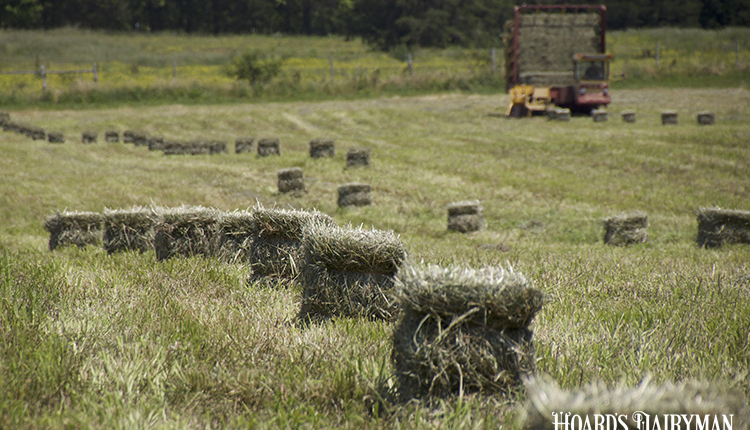
For anyone purchasing hay to feed livestock, it comes as no surprise that hay prices are on an upward trajectory. In fact, the average alfalfa hay price reported by USDA-NASS for September 2021 was $209, the highest price ever reported for the month of September.
“That price is almost $40 ahead of the same time last year,” noted Mike Rankin, managing editor of Hay & Forage Grower magazine. During the November Hoard’s Dairyman webinar, Rankin shared a few factors that have pushed alfalfa hay prices skyward.
A major player has been production obstacles of the 2021 growing season. Rankin explained that some parts of the country have experienced drought, and in the Northwest, excessive heat stymied hay growth, even on irrigated acres. Water restrictions for irrigation have been an obstacle in certain areas, and wildfires created smoke that lengthened drying times and reduced quality for some alfalfa producers.
On the flip side, other regions faced too much moisture, particularly in the mid-South, creating another set of haymaking challenges.
There have also been logistical challenges, whether hauling hay on land or by water. Rankin referenced both trucker shortages and ships sitting offshore waiting to be unloaded as hurdles of moving hay where it is needed. Inflated fuel and container prices are also adding to transportation costs.
Despite the shipping challenges facing the country right now, hay exports continue to be strong, particularly to China. “We still have strong numbers on the export side of things for alfalfa,” Rankin reiterated.
Meanwhile, retail crop input prices have soared. “This has a huge impact, not only when buying hay but also for producing hay,” Rankin said. “This is going to have a big impact on prices in 2022.”
Commodity prices have been high as well, and throughout his career, Rankin has seen a trend between the value of commodities and hay. “Any time we have high commodity prices, high hay prices generally follow,” he shared.
Although we won’t know for sure until the growing season is complete, USDA is predicting that both forage acres and yields will be down for 2021, further limiting the hay supply.
For these reasons, Rankin predicts that forages will be more expensive to both purchase and produce for the short to mid-term. To learn more, listen to the November Hoard’s Dairyman webinar, “A feed and forage outlook.” This webinar was sponsored by Chr. Hansen.








